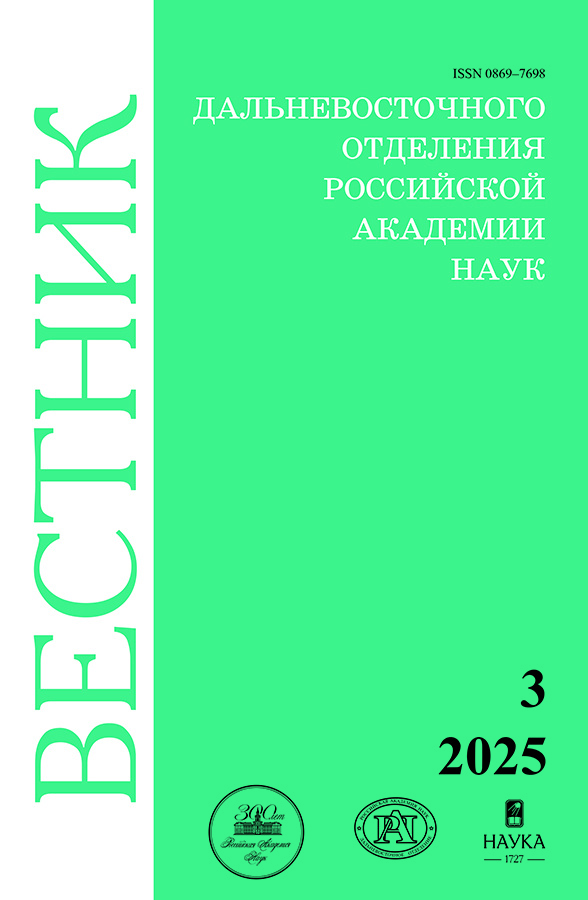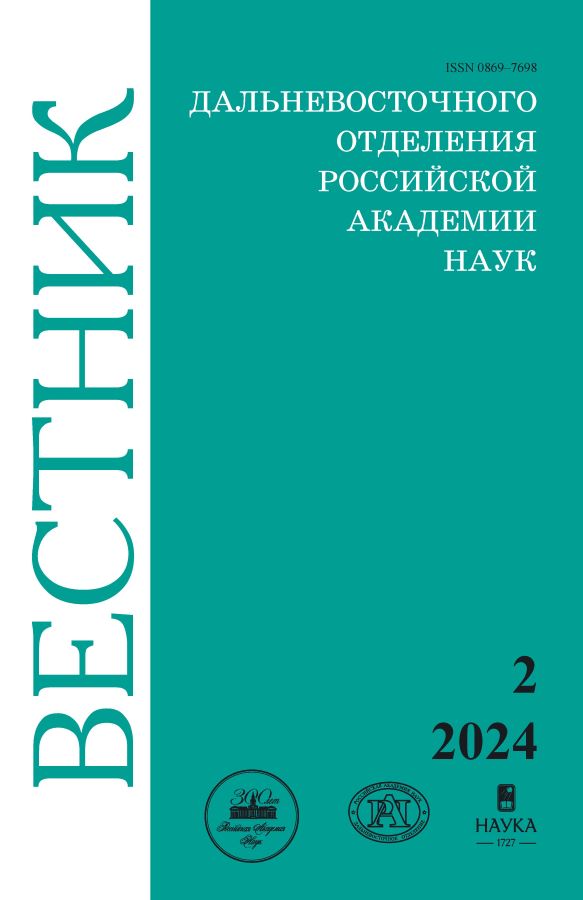Investigation of the adsorption capacity of some pectin-containing foods and apple pectin in relation to lead compounds with amino acids in vitro
- Authors: Tikhonova I.L.1, Belokonova N.A.1, Nasybullina G.M.1
-
Affiliations:
- Ural State Medical University
- Issue: No 2 (2024)
- Pages: 187-198
- Section: Chemical Sciences
- URL: https://archivog.com/0869-7698/article/view/676102
- DOI: https://doi.org/10.31857/S0869769824020168
- EDN: https://elibrary.ru/lciway
- ID: 676102
Cite item
Full Text
Abstract
Lead is one of the most common and dangerous toxicants for the human body. It was revealed that the lead content in some cases exceeds the hygienic standards established for food products. The complexing ability of lead ions with many essential and non-essential amino acids has been established, which causes an imbalance in the amino acid pool of the human and animal body. It has been established that the most effective sorbents and substances that bind lead ions are pectins. At the same time, the task of finding the most effective complexes of biologically active substances that increase the body’s resistance under conditions of exposure to lead and its compounds remains urgent. In this study, food products with a known and fairly high percentage of pectin substances were chosen as a source of pectin-containing substances: carrots and white cabbage, as well as apple pectin (dietary supplement). Since fish meat is one of the most common sources of lead entering the human body, amino acids for the study were selected based on the known amino acid composition of fish. The study confirmed previously known data on the ability of pectin substances to adsorb lead. At the same time, it was shown that the process of adsorption of lead ions in the presence of amino acids occurs more actively on the whole product, which has undergone heat treatment, than on apple pectin in the form of a dietary supplement. It was found that the adsorption capacity of carrots and cabbage is significantly higher compared to apple pectin, which is associated with adsorption by fiber, which is part of the vegetables. These results indicate the prospects of developing or adjusting targeted diets for the population living in environmentally unfavorable areas or working in hazardous working conditions.
Full Text
About the authors
Irina L. Tikhonova
Ural State Medical University
Author for correspondence.
Email: koritca14@gmail.com
ORCID iD: 0009-0004-9287-2451
Candidate of Sciences in Chemistry
Russian Federation, YekaterinburgNadezhda A. Belokonova
Ural State Medical University
Email: 89221503087@mail.ru
ORCID iD: 0000-0002-0198-3016
Doctor of Technical Sciences, Candidate of Sciences in Chemistry, Associate Professor
Russian Federation, YekaterinburgGalia M. Nasybullina
Ural State Medical University
Email: gdp43@yandex.ru
ORCID iD: 0000-0001-7513-5741
Doctor of Sciences in Medicine, Professor
Russian Federation, YekaterinburgReferences
- Korbanova A. I., Sorokina N. S., Molodkina N. N. et al. Svinets i ego deistvie na organism = [Lead and its effect on the body]. Meditsina Truda i Promyshlennaya Ekologiya. 2001;(5):29–34. (In Russ.)
- Novikova M. A., Pushkarev B. G., Sudakov N. P., Nikiforov S. B., Gol’’dberg O.A., Vaverbaum P. M. The effect of persistent lead intoxication on human organism. Sibirskii Meditsinskii Zhurnal. 2013;(2):13–16. (In Russ.).
- Neil Burford, Melanie D. Ilman, Wesley G. Leblanc, T. Stanley Cameron, Catherine N. Robertson. Definitive identification of lead(ii)-amino acid adducts and the solid-state structure of a lead–valine complex. Chem. Commun. (Camb). 2004;(3):332–333. doi: 10.1039/b311599b.
- Novikova G. V. Sintez i fiziko-khimicheskie kharakteristiki kompleksov 6s2- i ndm-ionov metallov s aminokislotami = [Synthesis and physicochemical characteristics of complexes of 6s2- and ndm-metal ions with amino acids]. Dis. for the degree of Cand. Chem. Sci. 02.00.01. Krasnoyarsk; 2006. 133 р. (In Russ.).
- Sheibak V. M., Lyakh I. V., Doroshenko E. M. Neuroactive aminoacids in the midbrain of infantrats in chronic intoxication with dinil and lead. Journal of the Grodno State Medical University. 2012;(3):40–42 (In Russ.).
- Morozova S. P. Postuplenie rtuti i mysh’yaka s ratsionami pitaniya v organizm vzroslykh i detei. = [Dietary intake of mercury and arsenic into the body of adults and children]. Gigiena i sanitariya. 1991;(7):38–41. (In Russ.).
- Dudarev A. A., Dushkina E. V., Sladkova Yu.N., Chupahin V. S., Lukichova L. A. Evaluating health risk caused by exposure to metals in local foods and drinkable water in Pechenega district of Murmansk region. Meditsina Truda i Promyshlennaya Ekologiyа. 2015;(11):25–33. (In Russ.).
- Kashuba N. A. Features of transcutaneous penetration of lead into the human body. Hygiene and Sanitation. 2021;100(1):55–59. (In Russ.). https://doi.org/10.47470/0016-9900-2021-100-1-55-59.
- Suldina T. I. The content of heavy metals in food and their effects on the body. Balanced Diet, Nutritional Supplements and Biostimulants. 2016;(1):136–140. (In Russ.). URL: https://journal-nutrition.ru/ru/article/view?id=35727 (дата обращения: 13.04.2024).
- Galatova E. A. Osobennosti nakopleniya tyazhelykh metallov v organakh i tkanyakh ryb razlichnykh semeistv = [Features of the accumulation of heavy metals in the organs and tissues of fish of various families]. Izvestiya TSKhA. 2009;(3):157–168. (In Russ.).
- Ershova T. S., Zaitsev V. F., Chaplygin V. A. Features of lead migration in the ecosystem of the Caspian sea. Scientific Notes of V. I. Vernadsky Crimean Federal University. Biology. Chemistry. 2021;7(4):3–22. (In Russ.).
- Popov P. A., Androsova N. V., Popov V. A. Metals content in the organs of the Starlet of the Acipenser ruthenus of the Middle Ob river. Vestnik of the North-Esatern Federal University. 2021;3(83):15–24. (In Russ.). https://doi.org/10.25587/SVFU.2021.83.3.011.
- Lopareva T. Yа., Sharipova O. A., Petrushenko L. V. Level of accumulation of toxicants in fish muscle tissue in water basins in the Republic of Kazakhstan. Bulletin of Astrakhan State Technical University. Series: Fish Farming. 2016;(2):115–122. (In Russ.).
- Boev V. M., Kryazheva E. A., Begun D. N., Borshchuk E. L., Kryazhev D. A. Hygienic assessment of population health risks caused by combined oral introduction of heavy metals. Health Risk Analysis. 2019;(2):35–43. (In Russ.). doi: 10.21668/health.risk/2019.2.04.
- Kuzmina E. A., Malykh O. L., Soloboyeva Yu.I., Kochergin Yu.V., Plotnikova I. A., Kadnikova E. P. Targeted systems of medicalprevention aid in high-risk groups of most vulnerable categories of the population residing in industry-affected areas. Hygiene and Sanitation (Russian journal). 2017;96(12):1140–1146. (In Russ.). http://dx.doi.org/ 10.18821/0016-9900-2017-96-12-1140-1146.
- Mikheeva L. A., Fevraleva M. A., Brynskikh G. T., Try A. V. Study of complexing ability of pectin with respect to copper and lead. Ulyanovsk Medical and Biological Journal. 2017;(2):111–115. (In Russ.). doi: 10.23648/UMBJ.2017.26.6225.
- Mykots L. P., Tukhovskaya N. A., Bondar S. N. Determination of kinetics of metal cation sorption with pectin from citrus. Advances of Modern Natural Science. 2010;(6):55–57. (In Russ.). URL: https://natural-sciences.ru/ru/article/view?id=8255 (дата обращения: 13.04.2024).
- Mykots L. P., Romantsova N. A., Gushchina А. V. Research of the pectin isolated from fresh fruits of cranberry high for sorption ability in relation to ion of lead. Fundamental Research. 2013;(3–1):197–200. (In Russ.).
- Bzhikhatlova M. A., Mykots L. P., Tukhovskaya N. A., Andreyeva O. A. Study of the sorption capacity of natural sorbents isolated from Kampsis rooting. Khimiya Rastitel’nogo Syr’ya. 2021;(1):71–78. (In Russ.). doi: 10.14258/jcprm.2021016618.
- Borisenkov M. F., Golovchenko V. V., Vityazev F. V. Adsorbtsiya estrogenov in vitro na fraktsiyakh pektinovykh veshchestv pertsa sladkogo i kapusty belokochannoi = [Adsorption of estrogens in vitro on fractions of pectin substances of sweet pepper and white cabbage]. Khimiya Rastitel’nogo Syr’ya. 2011;(3):53–58. (In Russ.).
- Gulyaev D. K., Belonogova V. D., Rudakova I. P., Korotkov I. V. Study of polysaccharides of common raspberry shoots and their sorption activity. Humansand Theirhealth. 2022;25(3):72–80. (In Russ.). doi: 10.21626/vestnik/2022–3/08.
- Makarova K. E., Khozhaenko E. V., Khotimchenko R. Yu., Kovalev V. V. Comparative lead-binding activity of pectins with different molecular mass in vitro. Pacific Medical Journal. 2013;(2): 85–88. (In Russ.).
- Machneva I. V., Bondarenko A. I. Evaluation of the content of pectin in some fruits and vegetables. Modern Problems of Science and Education. 2016;(2):212–218. (In Russ.). ISSN2686–9101. URL: https://eduherald.ru/ru/article/view?id=15149 (дата обращения: 13.04.2024).
- Limareva N. S., Donchenko L. V., Orobinskaya V. N. Functional beverages containing pectin on based on cabbage juice. Scientific Journal of KubSAU. 2017;(134):1018–1030. (In Russ.). ISSN 1990-4665.
- Kuzmin S. V., Gurvich V. B., Beliavskii A. P. Organization, perspectives of development, and scientific-methodological approaches to the occupational health risk management within the system “Occupational medicine” in the Sverdlovsk oblast, Russia. Uralʹskij Medicinskij Žurnal. 2011;87(9):5–8. (In Russ.).
- Mazhayeva T. V., Lavrentyev A. N., Malykh O. L., Kornilkov A. S. Methodical approaches to assessing nutrition of various population groups in the system of socio-hygienic monitoring of the Sverdlovsk region. Uralʹskij Medicinskij Žurnal. 2012;102(10):32–34. (In Russ.).
- Mazhayeva T. V. Effects of nutrition on physical development of preschool children exposed to adverse environmental factors. Uralʹskij Medicinskij Žurnal. 2011;80(2):53–56. (In Russ.).
- Katsnelson B. A., Privalova L. I., Gurvich V. B., Kuzmin S. V., Kireyeva E. P., Minigalieva I. A., Sutunkova M. P., Loginova N. V., Malykh O. L., Yarushin S. V., Soloboyeva J. I. The role of bio-prevention in the framework of managing occupational and environmental chemical risks to population health. Toksikologičeskij vestnik. 2015;(1):10–21. (In Russ.).
- Peshkov S. A., Schepin A. S., Khursan S. L., Kobzev G. I. Relative stability of the heavy metal (Zn, Cd, Co, Pb) complexes with alanine. Vestnik Bashkirskogo Universiteta. Khimiya. 2016;21(2):291–297. (In Russ.).
- Drozdova L. I., Pivnenko T. N., Karaulova E. P., Yarochkin A. P. Biochemical description of musclar tissue of deep-water fish as a source of free amino acids and biogenic peptides. Izvestiya TINRO. 2007;(150):383–390. (In Russ.).
- Kostenko E. E., Butenko E. N. Izuchenie kompleksoobrazovaniya Pb (II), Cd (II), Hg (II) s aminokislotami dlya prognozirovaniya protektornyh svojstv pishchevyh produktov = [Study of complex formation of Pb (II), Cd (II), Hg (II) with amino acids to predict the protective properties of food products]. Naukovі Pracі Nacіonal’nogo Unіversitetu Harchovih Tekhnologіj. 2012;(44):85–91. (In Russ.).
- Novosel’tseva E. E., Tikhonova I. L., Belokonova N. A., Popova O. S. Adsorption capacity of some food products and sorbents in relation to lead compounds. Aktual’nye voprosy sovremennoĭ meditsinskoĭ nauki i zdravookhraneniya: sbornik statei VIII Mezhdunarodnoĭ nauchno-prakticheskoĭ konferentsii molodykh uchënykh i studentov, Ekaterinburg, 19–20 aprelya 2023 g. Ekaterinburg: UGMU; 2023. Р. 765–771. (In Russ.). URL: https://elib.usma.ru/bitstream/usma/13566/1/USMU_Sbornik_statei_2023_149.pdf (дата обращения: 13.04.2024).
Supplementary files










